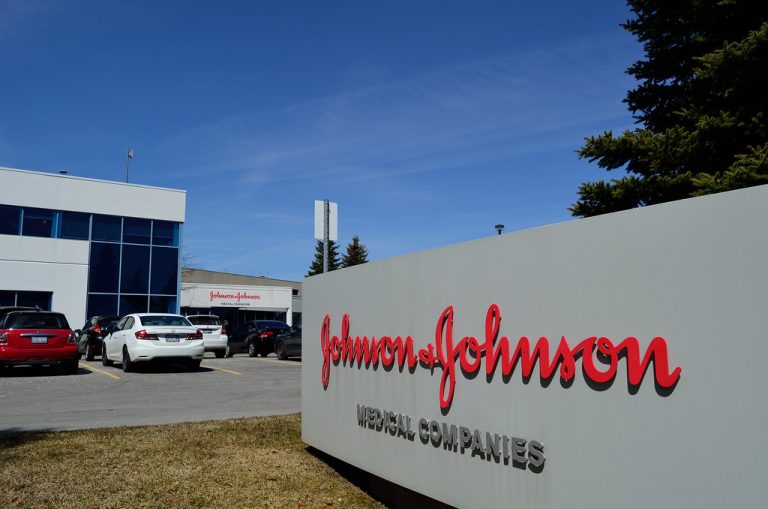
Feb 14 (Reuters) – A Johnson & Johnson (JNJ.N) subsidiary on Monday kicked off a courtroom battle that aims to use the bankruptcy process to resolve tens of thousands of claims that the company’s baby powder and other talc-based products caused cancer.
More than 38,000 plaintiffs have alleged the company’s talc products caused ovarian cancer and mesothelioma, a deadly cancer linked to asbestos exposure. J&J maintains that its consumer talc products are safe and confirmed through thousands of tests to be asbestos-free.
The company in October placed the talc claims into a newly-created entity called LTL Management LLC, which filed for bankruptcy protection in North Carolina.
U.S. Bankruptcy Judge Michael Kaplan in New Jersey, who took over the LTL case in November when it was transferred from North Carolina, has scheduled a five-day trial to consider a bid by committees representing the plaintiffs to dismiss the bankruptcy case.
Lawyers for committees representing the plaintiffs argue that allowing the LTL bankruptcy to proceed would unfairly cap the payout that could be available for people who have been harmed.
“At its core, this case is rotten,” Jeffrey Jonas, a lawyer for one of the plaintiffs’ comittees said during Monday’s opening arguments.
LTL has said in court filings that bankruptcy is a legal and appropriate response to an unpredictable and “potentially financially ruinous” wave of lawsuits.
J&J used a legal maneuver known as the “Texas two-step,” which allows companies to split in two through a so-called “divisive merger,” with one part of the company keeping valuable assets while the other is saddled with liabilities.
The strategy, while rarely used, could be adopted more widely by big companies facing liability if J&J gets bankruptcy-court approval, according to lawyers for talc plaintiffs, as well as some legal experts. If J&J succeeds, it could provide a blueprint for Corporate America on how to circumvent jury trials involving allegations of defective products or misconduct, the experts said.
J&J has proposed giving the subsidiary $2 billion to put into a trust to compensate the 38,000 current plaintiffs and future claimaints. The company has said in court filings and in public statements that LTL could also tap a stream of royalty revenue valued at more than $350 million at the time of the bankruptcy filing.
The bankruptcy proceeding “makes dying cancer victims, even those with a judgment, scratch, claw, and fight, potentially for years, to be compensated from funds that would have been available” before LTL was split off, the plaintiffs’ lawyers wrote in December court papers.
“There has been no attempt in this case to ‘slough off’ liability,” LTL wrote in December court papers. The “goal of this case is to reach an equitable, efficient, and consensual resolution.”
Before J&J split off LTL, it faced $3.5 billion in verdicts and settlements, including one in which 22 women were awarded a judgment of more than $2 billion, according to bankruptcy-court records.
The talc lawsuits have been temporarily halted while J&J, which has a market value exceeding $446 billion, awaits the outcome of the LTL bankruptcy proceedings.
Kaplan has said he intends to decide whether or not to dismiss the bankruptcy case before the end of the month.
On Feb. 4, Reuters reported that J&J secretly launched “Project Plato” last year to shift liability from about 38,000 pending talc lawsuits to a newly created subsidiary, which was then to be put into bankruptcy. [nL1N2UF2HM]
A 2018 Reuters investigation found that J&J knew for decades that trace amounts of asbestos lurked in its Johnson’s baby powder and other cosmetic talc products.
The company stopped selling its baby powder in the United States and Canada in May 2020, in part due to what it called “misinformation” and “unfounded allegations” about the talc-based product.